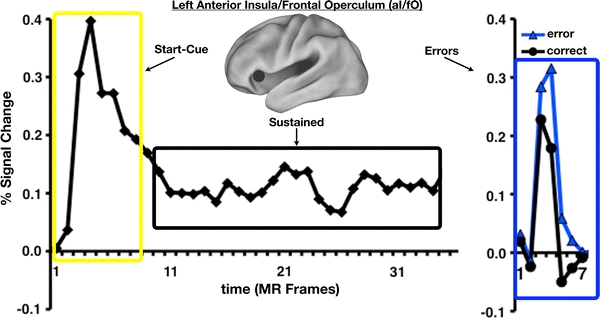Fig. 2.

Across a variety of tasks, bilateral anterior insula (aI) contains signals that are consistent with a general role in task-level control. The mixed blocked/event-related fMRI design allows the separate extraction of three different types of task set-related signals. Shown here is the average remaining task-related activity (left panel) after trial-related activity (right panel) has been extracted. Activity time-locked to the start of a task block (yellow) is likely important for the initiation of task sets, while activity sustained for the length of the task period (black) is likely related to the maintenance of task sets to ensure continued performance success. Error-related signals (blue) provide performance feedback on a trial-by-trial basis. Adapted from Neuron (Dosenbach et al. 2006). Copyright (2006), with permission from Elsevier
